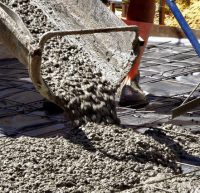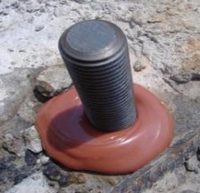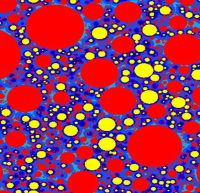- ppt90admin@
- ppt90.ir@yahoo.com
Design of shear wall؛طراحی دیواربرشی
قیمت:
رایگان
توضیحات تکمیلی
| تعداداسلاید | 150 |
|---|---|
| دسته بندی | بتن |
| برچسب ها | Behavior of Shear Walls, Bending, Cm Factor, Column, Concrete, Design of Shear Walls, Element Moment, ETABS, Narrow Planner Wall, Rebar, Shear Wall, Slenderness of Columns, Types of Shear Wall, Wall Section, آرماتور, بتن, دیواربرشی, سازه بتنی, شکست دیواربرشی, طراحی دیواربرشی, مدل سازی دیواربرشی, میلگرد |
توضیحات کلی پاورپوینت:
- این پاورپوینت به زبان انگلیسی ومرجعی بسیار بسیار کامل ،مفید ومناسب ، جهت آشنایی با رفتار،مدل سازی وطراحی سیستم ها وسازه هایی است که از دیواربرشی درآنها استفاده شده است .
-همچنین باتوجه به اینکه یک بخش کامل این پاورپوینت اختصاص به نحوه مدل سازی دیواربرشی درنرم افزارایتبس دارد،برای مهندسان محاسب نیزبسیارمفید می باشد.
- عنوان کامل این پاورپوینت:
Behavior, Modeling and Design of Shear Wall-Frame Systems
بخش های اصلی این پاورپوینت 150اسلایدی:
- Shear Wall – Common Misconceptions
- The Basic Behavior of Shear Walls, Frames and Shear Wall-Frames
- Basic Modeling Options for Shear Walls
- Modeling of Shear WallsIn ETABS
- Design of Shear Walls
- Slenderness of Columns
برای دیدن لیست کامل مطالب داخل این پاورپوینت قسمت "اطلاعات بیشتر"راملاحظه نمائید.
لیست کامل مطالب داخل این پاورپوینت:
- The Basic Issues
- Shear Wall – Common Misconceptions
- Shear Wall or Column
- Shear Wall or Frame
- Shear Wall and Frame Behavior
- Shear Wall and Truss Behavior
- Shear Wall and Frame
- Shear Wall and Frame Interaction
- Frame and Frame-Shear Wall
- Shear Wall and Frame Interaction
- The Basic Behavior of Shear Walls, Frames and Shear Wall-Frames
- Case Studies: Shear Wall–Frame Interaction
- Case 1: Shear Wall–Frame Interaction
- Case 2: Shear Wall–Frame Interaction
- Case 3: Shear Wall–Frame Interaction
- Case 4: Shear Wall–Frame Interaction
- Case 5: Shear Wall–Frame Interaction
- Case 6: Shear Wall–Frame Interaction
- Case 7: Shear Wall–Frame Interaction
- Case 8: Shear Wall–Frame Interaction
- Case 9: Shear Wall–Frame Interaction
- Shear Wall–Frame Interaction
- Change in Shear Wall Moments
- Coupling Element Moments
- Shear Wall-Frame Load Distribution Curves
- Deflected Shape of Shear Wall-Frame Interactive System
- Comparison of Shears and Moments in the Core wall
- Comparison of… : Type A
- Comparison of… : Type B
- Comparison of… : Type C
- Comparison of… : Type D
- Comparison of Shears and Moments in the Core wall
- Wall-Frame Interaction: Key Conclusions
- Basic Types of Shear Walls
- Basic Modeling Options for Shear Walls
- Modeling of Walls using 1D Elements
- Frame Model for Planer Walls
- Frame Models for Cellular Walls
- Modeling Walls using 2D Elements
- Modeling Walls Using Membrane
- Modeling Walls using Shell Elements
- Using Incomplete Membrane Elements
- Using Complete Membrane Elements
- Connecting Walls to Slab
- Using Trusses to Model Shear Walls
- Truss Model for Shear Walls
- How to Construct Truss Models
- Openings in Shear Walls
- Openings in Shear Walls – Cellular
- Openings in Shear Walls – Planer
- Modeling Walls with Opening
- Frame Model of Shear Walls
- Using Beam-Column to Model Shear Walls
- Shear Wall Design –Meshing
- Modeling Shear Walls Using Shell Elements
- Modeling Shear Walls Using Beam Elements
- Comparison of Behavior
- Comparison of Behavior (5 Floors)
- Comparison of Behavior (15 Floors)
- Comparison of Behavior (25 Floors)
- Effect of Shear Wall Location
- Modeling of Shear WallsIn ETABS
- Shear Wall Design – Using ETABS
- Shear Wall Design –Meshing
- Shear Wall Design – Pier Zones
- Shear Wall Design – Spandrel Zones
- Concrete Shear Wall Design
- Interaction Surface for Shear Walls
- Concrete Shear Wall Design
- Shear Wall – Typical Design Process
- Shear Wall Design – Output
- The Basic Issues
- Avoid Eccentricity in Plan
- Reduce In-plane Bending in Floor
- Vertical Irregularity
- Using Efficient Building Plan Shape
- Design of Shear Walls
- Axial Stresses in Planer Walls
- Axial Stresses in Cellular Walls
- Getting Result from Frame Model
- Getting Results from Truss Model
- Getting Results From Shell Model
- Interaction Curves – Uniaxial
- Interaction Surface – Biaxial
- Interaction Surface and Curves
- Narrow Planner Walls
- Cellular Wall – No Opening
- Single Cell Walls
- Double Cell Walls
- Designing as Axial Zones
- Axial Zone Model – Planer Wall
- Axial Zones for Box Wall
- Shear Design of Pier
- ACI Equations for Pier Design
- Shear Design for Spandrel
- ACI Equations for Spandrel Design
- Notations for Shear Design
- Wall Section
- Effect of Rebar Layout
- Rebar Detailing For Openings
- Slenderness of Columns
- Complexity in the Column Design
- What is Slenderness Effect
- Factors Effecting Slenderness Effect
- ACI Moment Magnification Summary
- What is Sway …
- … More on Sway
- Calculation of dns (Non-Sway)
- The Cm Factor
- More about Cm Factor
- Effective Length Factor, K
- … Determination of K
- … More about Factor K
- Determination of Stiffness EI
- Slenderness procedure for Buildings
- BS Moment Magnification
- Calculation of Deflection au
- Some Special Cases
برچسب ها:
Behavior of Shear Walls, Bending, Cm Factor, Column, Concrete, Design of Shear Walls, Element Moment, ETABS, Narrow Planner Wall, Rebar, Shear Wall, Slenderness of Columns, Types of Shear Wall, Wall Section, آرماتور, بتن, دیواربرشی, سازه بتنی, شکست دیواربرشی, طراحی دیواربرشی, مدل سازی دیواربرشی, میلگرد
دسته بندی پروژه ها
-

کاربری ورزشی (52)
-

کاربری مسکونی و اقامتی (237)
-

کاربری فرهنگی و هنری (127)
-

کاربری درمانی (68)
-

کاربری تجاری ، اداری وتفریحی (109)
-

کاربری آموزشی (125)
-

معماری جهان و معماری معاصر (163)
-

معماری اسلامی و ایرانی (271)
-

معماران مشهور (101)
-

مرمت وتعمیرونگهداری (138)
-

مدیریت پروژه و ایمنی (208)
-

مبانی نظری معماری (132)
-

فولاد (300)
-

سد، خاک و پی (185)
-
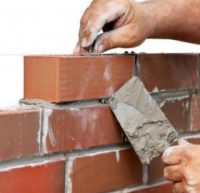
سایر نکات اجرایی (178)
-

روستا و شهرسازی (253)
-

دکوراسیون داخلی ونمای ساختمان (137)
-

حمل و نقل و راهسازی (263)
-

تنظیم شرایط محیطی (278)
-

تحلیل ، زلزله و مقاوم سازی (226)
-

تاسیسات (181)
-
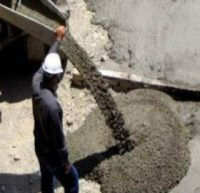
بتن (321)
-

انواع سقف ها و سازه ها (220)
-
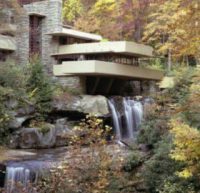
انسان،طبیعت و معماری (136)






